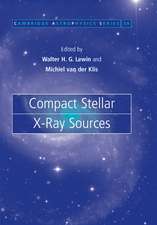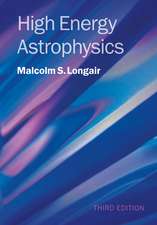Theory of Orbit Determination
Autor Andrea Milani, Giovanni Gronchien Limba Engleză Hardback – 11 noi 2009
Preț: 697.61 lei
Preț vechi: 783.83 lei
-11% Nou
Puncte Express: 1046
Preț estimativ în valută:
133.49€ • 142.74$ • 111.30£
133.49€ • 142.74$ • 111.30£
Carte tipărită la comandă
Livrare economică 18 aprilie-02 mai
Preluare comenzi: 021 569.72.76
Specificații
ISBN-13: 9780521873895
ISBN-10: 0521873894
Pagini: 392
Ilustrații: 2 b/w illus.
Dimensiuni: 178 x 253 x 22 mm
Greutate: 0.91 kg
Editura: Cambridge University Press
Colecția Cambridge University Press
Locul publicării:Cambridge, United Kingdom
ISBN-10: 0521873894
Pagini: 392
Ilustrații: 2 b/w illus.
Dimensiuni: 178 x 253 x 22 mm
Greutate: 0.91 kg
Editura: Cambridge University Press
Colecția Cambridge University Press
Locul publicării:Cambridge, United Kingdom
Cuprins
Preface; Part I. Problem Statement and Requirements: 1. The problem of orbit determination; 2. Dynamical systems; 3. Error models; 4. The N-body problem; Part II. Basic Theory: 5. Least squares; 6. Rank deficiency; Part III. Population Orbit Determination: 7. The identification problem; 8. Linkage; 9. Methods by Laplace and Gauss; 10. Weakly determined orbits; 11. Surveys; 12. Impact monitoring; Part IV. Collaborative Orbit Determination: 13. The gravity of a planet; 14. Non-gravitational perturbations; 15. Multi arc strategy; 16. Satellite gravimetry; 17. Orbiters around other planets; References; Index.
Recenzii
"This book is written clearly and is almost self-contained." -Alessandra Celletti, Mathematical Reviews
Notă biografică
Descriere
Presents new algorithms for determining orbits; ideal for graduate students and researchers in applied mathematics, physics, astronomy and aerospace engineering.









